
Don’t let your content problems pile up. Tackle them now!
Now is the opportune time for us to start taking our content seriously. Over the past few years, there has been a surge in web devices that focus on portability and readability over processing power. With a changing attitude amongst key media players, content must no longer be ignored as a truly marketable asset.
Editor’s Note: Some of you readers out there may find this post familiar; indeed, this post was published July 13th, 2010 under the title “Putting Content Back on Top.” Due to some outcry over the post’s originality and validity, UX Booth removed the article to satisfy concerned parties and to conduct an editorial review. After extensive review and minor editing, we have decided to republish this article in its present form.
In June 2010, The Times newspaper began charging for its online content, with editor James Harding stating that it was “time to stop giving away our journalism.” Whether you agree with this move or not (this has already resulted in a loss of 33% of readers), it is a bold statement, and a stake in the ground for the value of content online.
Framing an understanding
If we are to convince clients and co-workers to promote the importance of content, we need to first do two things:
- Provide a common language for speaking about content
- Provide the tools to initiate change
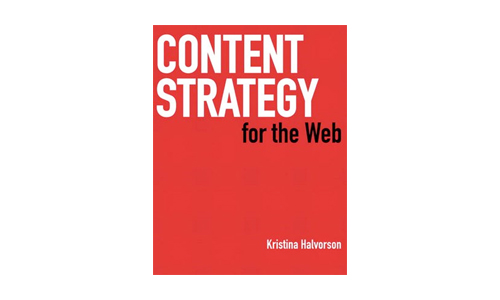
Content Strategy Manifesto
Content strategy fulfills both these objectives as it offers us a framework for understanding our content and a plan accomplish our objectives. Halvorson, in her book Content Strategy for the Web, defines it as:
the practice of planning for the creation, delivery and governance of useful, useable content.
Whilst you may be unfamiliar with the term “Content Strategy,” you are probably familiar with at least one of the disciplines it incorporates:
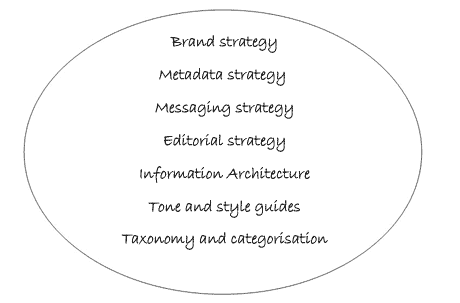
The many disciplines of Content Strategy
Content Strategy helps us to understand that these are not separate and distinct disciplines, but are in fact complementary processes that should be bound together within one unifying aim—to produce powerful, relevant content.
So how does this plan play out? Halvorson divides it into 3 phases:
- Audit
- Analysis
- Recommendation (what she calls the ‘strategy’ itself)
If we break the strategy down into its component parts, we are less likely to become overwhelmed by the sheer number of areas it covers. It also allows us to take a step back from what is often an emotionally charged topic and adopt a more considered approach.
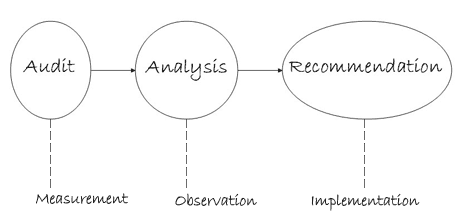
The three key stages of Content Strategy
The first stage is where you produce an audit, otherwise known as a content inventory. This is a quantitative process that is a measure of what (all pages and content types) and where (how they fall in relation to each other). It is very similar in format to an IA document, but instead of describing “what should be” it describes “what is.”
This is a valuable process, for it enables the Content Strategist to “not only learn about what content is on an existing site, but also how the site is structured and a lot about the business” (The Web Content Strategist’s Bible, Richard Sheffield)
The second stage is where you gather and analyze all the existing information that prescribes how content gets online (the process) and what you want to achieve with it (your goals). Your content does not exist in a vacuum; you therefore need to observe what policies, procedures, and practices impact upon it. Without thorough observation, you are at risk of making recommendations which fall outside business objectives or are just not feasible given the current structure and practice of the company.
So you’ve done all the hard work; now you’re ready to prepare your recommendations (or Content Strategy document):
The Content Strategy document is a compilation of a number of analysis documents. Exactly which documents to include will vary per project depending on the project’s requirements.
The Web Content Strategist’s Bible, Richard Sheffield
They could be formal documents, guidelines, principles, or even timelines. They should be best suited to the situation at-hand. Don’t deliver a heavy report if you know it will never be used.
Whatever form your recommendations take, they need to address how content changes can be implemented, and include such things as:
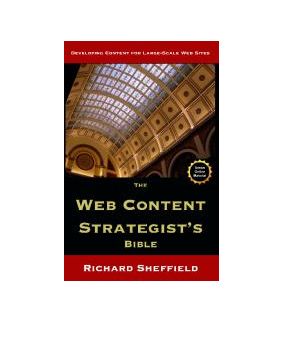
The Web Content Strategist’s Bible provides a useful handbook and reference.
- What content is needed? This is where your audit will come into its own.
- How will content be created? You may need to put in place a schedule to accomplish this.
- How will this content be ordered and structured? You need to consider how content connects to itself within pages and between them.
- How does web content interact with offline communications? As a company you should be delivering one clear message throughout all media avenues.
- How do we decide when content should be retired?
Note: If you are interested in the outputs of Content Strategy, Sheffield’s The Web Content Strategist’s Bible provides a great handbook for use in-the-field and includes a number of templates for key strategy documents.
Standing on your soapbox
There was a time when you could get away with writing websites that weren’t standards-compliant. However, that is no longer the case. If you’re at all serious about your website, you know the importance of building to web standards. The same is the case for usability, social media, and SEO. What were in the past thought of as nice-to-have elements are fast becoming a fundamental part of the web development process. So the next avenue for revolution is content; experts have been talking about it for years, and the industry is finally ready to listen. The first Content Strategy Consortium was held in 2009, and in recent months the blogosphere has been awash with articles (like this one) about how we need to start taking content more seriously.
The great thing about the web is that everything is new, whether it’s 20 years old or 20 minutes, it’s still a very “new media.” This has two big implications for anyone working as a web practitioner:
- We’re all still learning.
Working in digital arena there is never a point where we can become complacent - You don’t have to be an expert to be an expert.
When it comes to “online,” experience is just as valuable (if not more so) than formal qualifications. Observations made in-the-field can be far more enlightening than anything gleaned from a book.
So what does this mean for you and your content? If you recognize the missed opportunities in regards to your content, don’t let lack of qualifications or seniority get in your way. If the saying is true, that content is king, you need to become the king of your content.
Content Strategy on a post-it note
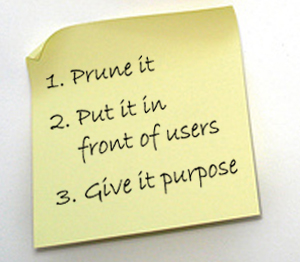
3 principles to apply now
It may be at this stage that you are convinced you need to elevate the importance of your content—however you may lack the time and resources to implement a full content strategy. Fear not! Here are some things you can do now to improve your content.
- Prune it
- Put it in front of users
- Give it purpose
Prune it
There is no innate value to content; it’s not a case of the bigger the better. In fact, quite the opposite is true: one of the biggest problems we face with our content is that of bloat. Content provides value only when it communicates a message or assists a user in completing a task—anything else is just dead wood. So go on, get your shears out: prune content that is distracting, out of date, or irrelevant and you’ll expose your hardworking, valuable content to the user.
Put it in front of users
In many cases, you may be too close to the content to really assess it. Without putting your content in front of your end users, any changes or improvements you make will always only ever be a best guess. Formal user testing can be intimidating, but that’s not what is required here. All we need to do is test drive your content, which means coming up with some basic tasks, laying out content as it will appear on the final site, and asking users to step through the process. Obviously the closer your test drive is to the final site, the more accurate your results will be, but even a very stripped down example is going to beat your best guess any day!
Give it purpose
Before you work out what you write, you need to establish what you want to achieve. Try to articulate your key messages and objectives for the website. Then break down these high-level messages and objectives into sub-messages and tasks. These will form the building blocks for your website’s content, and provide a measure against which to assess your existing content.
A vision for the future
Imagine a future with web sites full of relevant, hard-working content that makes understanding clearer and supports users in completing their goals. Is this enough to convince you (or your organization) to redress the balance and promote the importance of content in your web processes? Or perhaps you’re just content to stick with the status quo, but be warned if we continue to neglect our content, this will be the result:
we’ll continue to churn out worthless content in reaction to unmeasured requests. We’ll keep trying to fit words, audio, graphics, and video into page templates that weren’t truly designed with our business’s real-world content requirements in mind. Our customers still won’t find what they’re looking for. And we’ll keep failing to publish useful, usable content that people actually care about.
Kristina Halvorson, Content Strategy for the Web